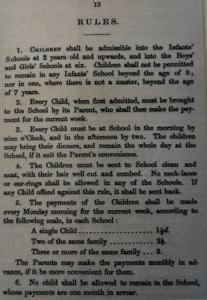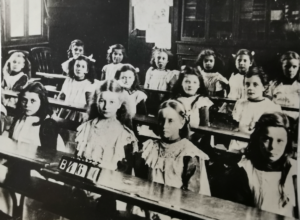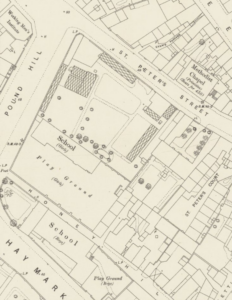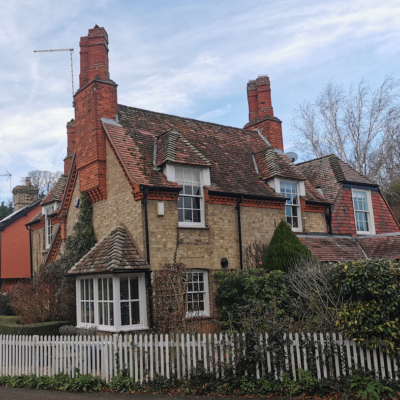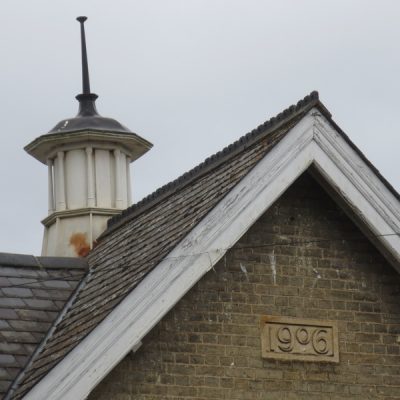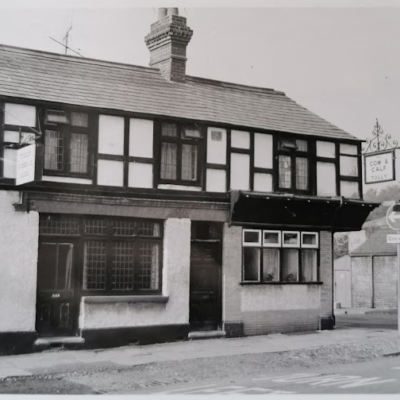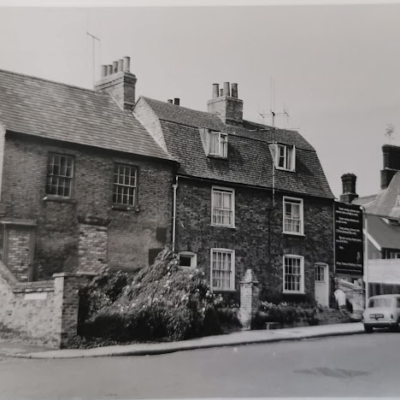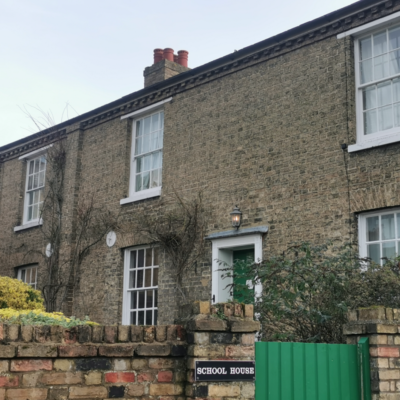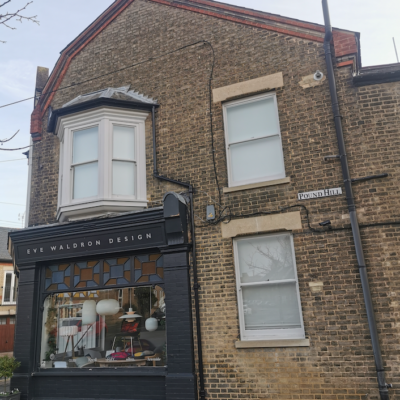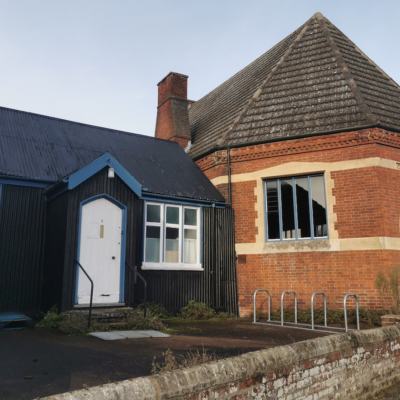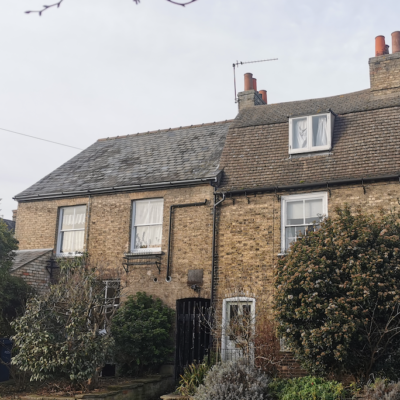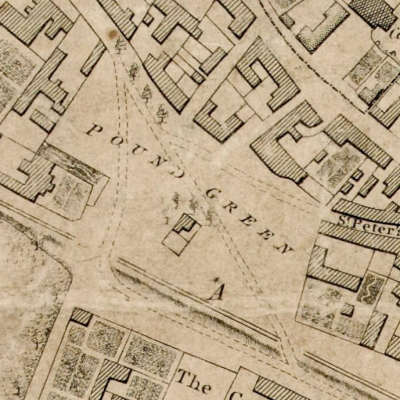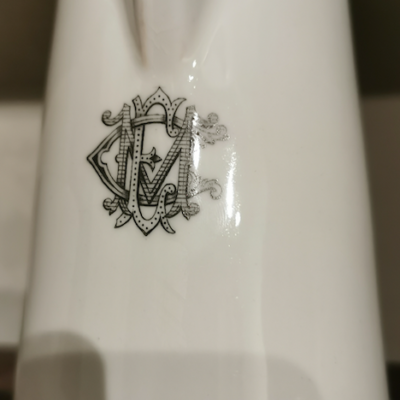Search by topic
- archaeology
- Building of Local Interest
- charity
- church
- crime
- dressmaker
- fire
- Great Eastern Railway
- Listed building
- Mapping Relief
- medieval
- oral history
- poverty
- Public House
- Rattee & Kett
- Religious House
- Roman
- scholar
- school
- Then and Now
- tudor
- women
- work
- world war one
- world war two
Search by text
 St Giles Infant School c.1900 - giving out cod liver oil on spoon
St Giles Infant School c.1900 - giving out cod liver oil on spoonNew Free School / SS Giles’ and Peter’s Girls School / Pound Hill School
History of New Free School Pound Hill
The 1831 New Guide to Cambridge states that the New Free School was:
built in a plain substantial manner sufficiently spacious to hold 300 boys with a house for the Master contiguous.
This Institution was founded in 1808 for the education of the poor of the town and adjacent villages, on the plan of Dr Bell and Mr Lancaster, but that of the former as adopted by the National society, is now exclusively pursued. Boys are admitted between the ages of six and eleven. The institution is under the management of Governors; constituted by a donation of ten guineas, or an annual subscription of one guinea. The School House etc was erected by a liberal subscription, including a grant of 150l from the University Chest. And the Governors of the old or Whiston’s Charity Schools allow 30l per annum to this institution.
The first infant school in this area was established in the Parish of St Giles in 1826. The Education Acts of the late 19th century, which made schooling compulsory for five to twelve year olds, and the growth of Cambridge, meant more schools were needed. St Luke’s was founded in 1874, followed by Milton Road in 1908 and Richmond Road Infants in 1909. In 1929 St Giles’s joined with St Luke’s.
St Gile’s School was in Albion Row. It was not the only school with strict rules. The Punishment Book for St Luke’s reveals that children were punished for “continuous misbehaviour and laziness, lying and making fun of the teacher.” The last entry in the book was in 1957 when a pupil received two strokes on the hand for smoking.
In 1913 the site was being used by the SS. Giles’ and Peter’s Girls’ School, Mis H Salmon, headmistress.
The 1959 Royal Commission on Historical Monuments Survey of Cambridge, stated that the former Pound Hill School was now a medical centre and private dwelling.
Contribute
Do you have any information about the people or places in this article? If so, then please let us know using the Contact page or by emailing capturingcambridge@
License
This work is licensed under CC BY-NC-SA 4.0






